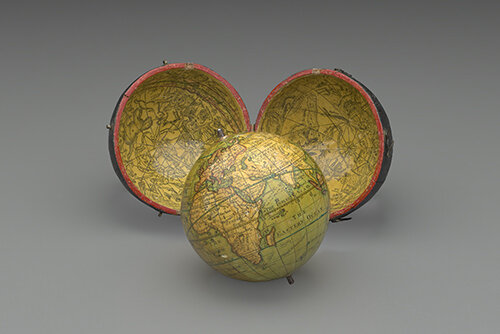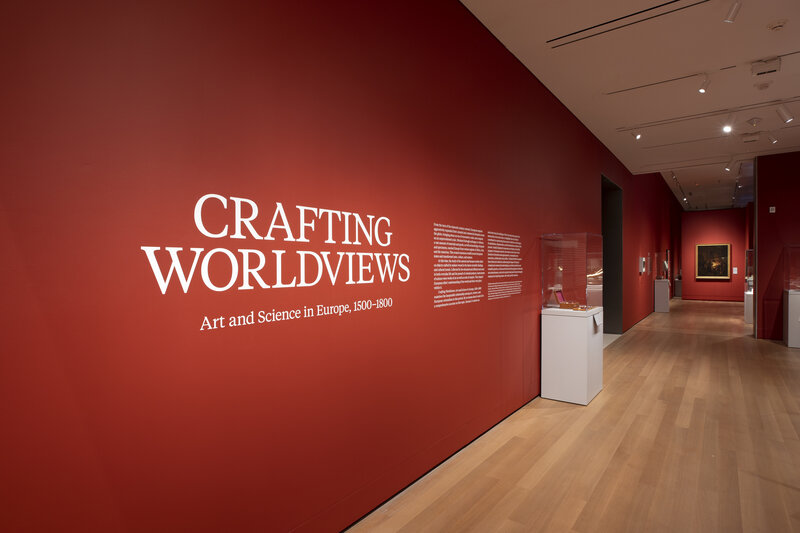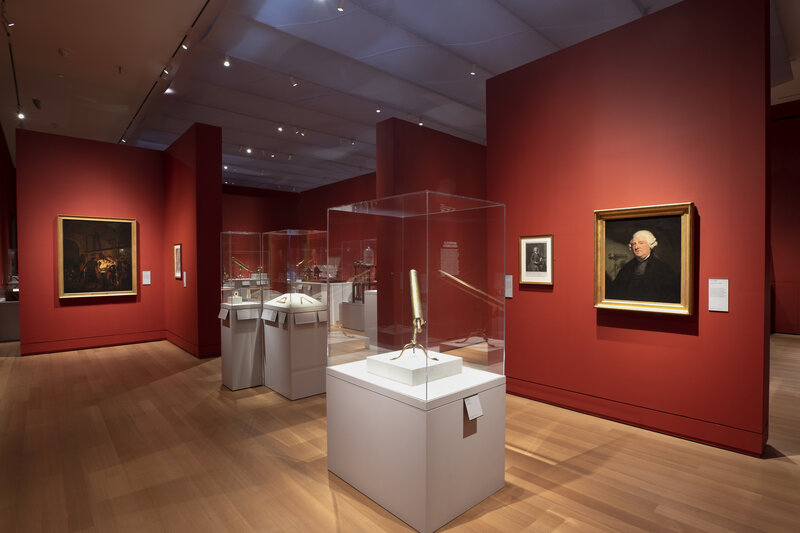Crafting Worldviews: Art and Science in Europe, 1500–1800 examines the inseparable relationship among art, science, and European colonialism from the 16th through the 18th century—an era of voyage, trade, and Europe’s territorial dominance on a global scale. The objects featured in this multidisciplinary exhibition cross the modern-day boundaries of art and science and range from the everyday, such as books, maps, globes, drafting tools, microscopes, playing cards, and sundials, to the more unusual, such as a hand-cranked model of the solar system, an automaton clock, and anatomical figures carved in ivory. Drawn from across the University’s campus and crafted from both locally and globally obtained materials, including brass, ivory, mahogany, and ebony, the works featured are remarkable not just for their exquisite design but also their intricate construction. Together, they illuminate the critical role that art and science have played in shaping Europeans’ understanding of the world and their place within it.

Exhibition: Crafting Worldviews: Art and Science in Europe, 1500–1800

Unknown German artists, Automaton Clock in the Shape of Diana on Her Chariot, first quarter 17th century. Case: gilt brass and ebony; dials: partly enameled silver; movement: brass and iron. Yale University Art Gallery, Gift of Mrs. Laird Shields Goldsborough in memory of Mr. Laird Shields Goldsborough, B.A. 1924

Pocket Globe with a Case (signed: “LANE’s Improved GLOBE | London”), England, ca. 1783–1803. Hand-colored gores and steel; case: shagreen and brass. The Lentz Collection, On loan to the Yale Peabody Museum

Set of 24 Microscope Slides (signed: “AYpelaar & comp”), Netherlands, ca. 1808–11. Brass, glass, ivory, mahogany, natural specimens, and a handwritten inscription in brown ink. Yale Peabody Museum, The Lentz Collection
Views of the Exhibition



Watch the Video
Exhibition made possible by the Jane and Gerald Katcher Fund for Education. Organized by Jessie Park, the Nina and Lee Griggs Assistant Curator of European Art, Yale University Art Gallery, and Paola Bertucci, Associate Professor, History of Science and Medicine Program, Yale University, and Curator of the History of Science and Technology Division, Yale Peabody Museum; in collaboration with Alexi Baker, Collections Manager, History of Science and Technology Division, Yale Peabody Museum; and with the assistance of Manon Gaudet and Kartika Puri, Graduate Curatorial Interns, Department of European Art, Yale University Art Gallery, and Ida Brooks, PC ’24.


